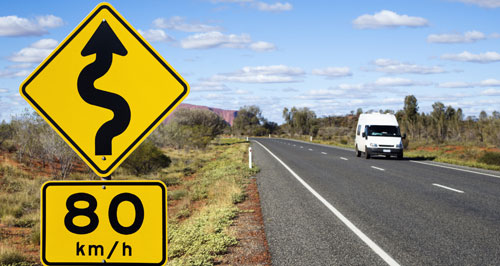Make / Model Search
News - General NewsUndivided roads ‘deadly at 100km/h’Head on: Centre white line is no saviour at speed, says police crash investigator. Police crash investigator calls for ‘survivable’ 80km/h limit on undivided roads29 Mar 2010 A LEADING Victoria Police road crash investigator has called for the abolition of 100km/h limits on undivided roads. Speaking at the Society of Automotive Engineers Australasia Change by Design forum in Melbourne last week, Victoria Police collision reconstruction team leader Peter Bellion said cars travelling at 100km/h in opposite directions with less than a car’s length between them were a recipe for disaster. He said advances in vehicle design meant the chances of surviving an 80km/h impact had improved greatly, but the forces of an impact at faster speeds meant survival was unlikely due to ‘complete structural disintegration’. “Even with the most sophisticated car, we can’t survive that (above 80km/h), and yet we still have undivided roads with 100km/h limits and a white line separating you from the oncoming traffic,” he said. “At the weekend a driver was adjusting the radio and all of a sudden (they go) into the oncoming traffic and we have a fatal outcome, just like that.” Sen-Sgt Bellion said there should be more margin for error. “Why do we still have 100km/h limits when someone makes the slightest mistake somebody is going to pay for it with their lives.” He said multiple fatalities on such roads were far too common and suggested that reducing the speed limit to 80km/h, or building more divided roads, would give drivers a far better chance of survival.  Sen-Sgt Bellion also used his presentation to highlight the role of new technology in reducing road fatalities and injuries. Sen-Sgt Bellion also used his presentation to highlight the role of new technology in reducing road fatalities and injuries.He said electronic stability control (ESC) had saved many lives. “We have still gone to crashes where they have had ESC, but instead of the vehicle going sideways into the pole or a tree at an impact speed 30km/h impact, which is enough to be fatal, the car is going front-on into a pole or tree (more slowly), and in a modern car you can survive that up to 80km/h or so,” he said. Sen-Sgt Bellion said about 30 per cent of crashes attended by police would involve an incident that would trigger an ESC system. He said the technology was a life saver, but said drivers should be trained to make the most of it. “They (ESC systems) are making a difference, but it also comes down to driver training and how to steer away from hazards, not just letting it go completely,” he said. Airbags were also saving lives, said Sen-Sgt Bellion. “That has definitely reduced road trauma in this state. I have found that the frontal airbags, the delta of the speed change during a fatal crash, before airbags was typically about 60km/h, so if someone hit at 60km/h that was it, but now that is going up to about 80km/h,” he said. He said side airbags appeared to be helping, with occupants more likely to survive a side impact at 40km/h an hour with side airbags while a 30km/h crash would likely kill occupants of a car without side airbags. Even so, he said crashes at intersections were still particularly dangerous. Sen-Sgt Bellion said speed cameras also saved lives. “From my point of view, being an engineer and seeing the introduction of the program, the road safety cameras have saved thousands of lives and reduced trauma considerably,” he said. “There are a certain groups that will have a whinge and take you to court. There are some stumbling blocks sometimes when things aren’t quite right, but generally the program works quite well.”  |
Click to shareGeneral News articlesResearch General News Motor industry news |









Facebook Twitter Instagram